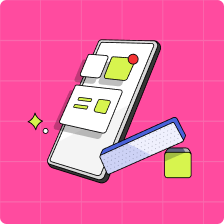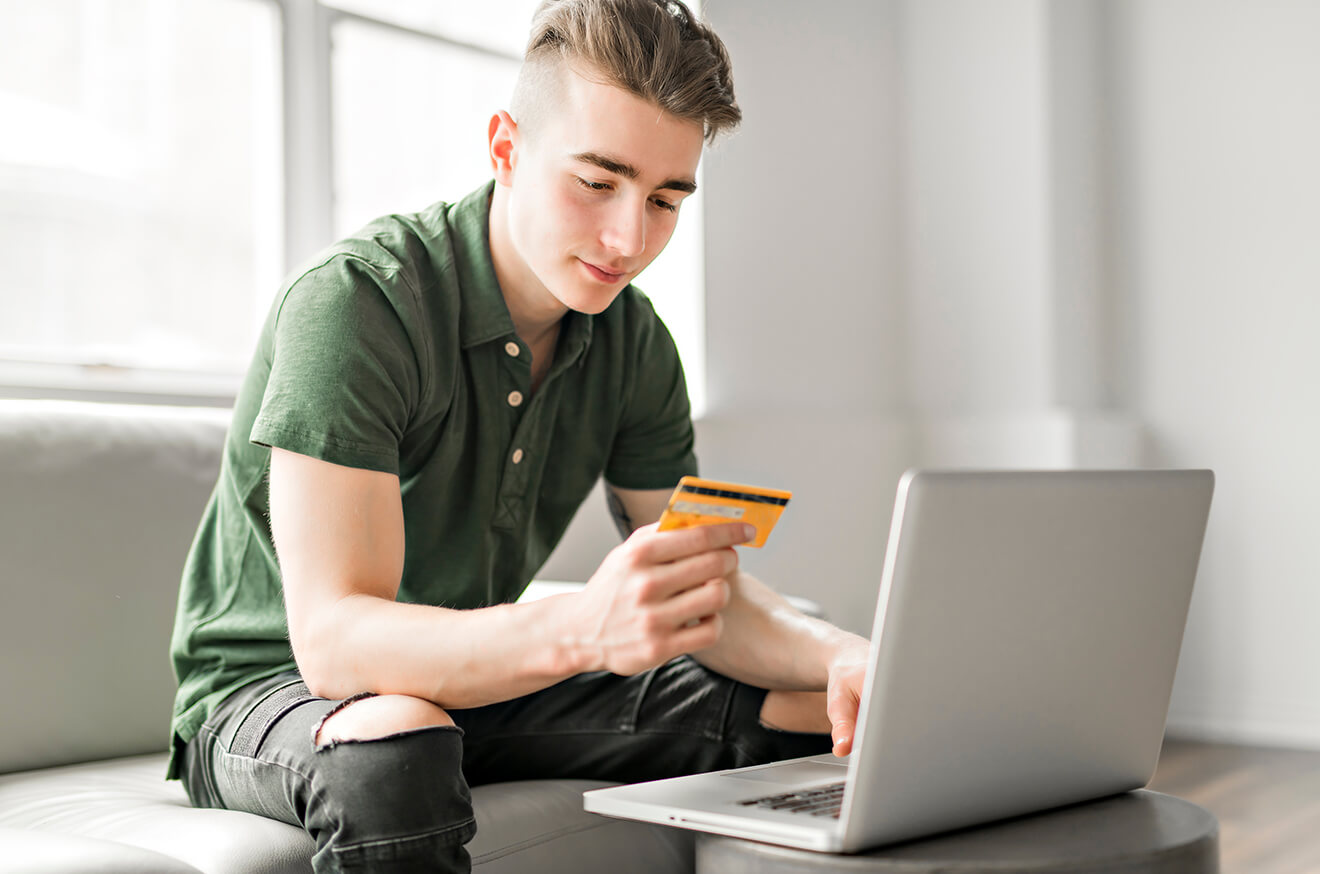When it comes to teaching our kids about money, parents tend to focus on saving and responsible spending. And while these are cornerstones to raising financially smart kids, another aspect of money management is handling credit.
We’ve either been there ourselves or know someone who ended up drowning in credit card debt. As parents, we want to prevent our kids from making the same mistakes. This is why it’s tempting to avoid discussing credit cards at all. But failing to educate kids, especially teens, about how to use credit cards effectively isn’t going to necessarily prevent them from obtaining one as soon as they’re able.
Here’s how to explain to your kids what a credit card is, how to use it responsibly, what your teen should look for in their first credit card, as well as how the Mydoh Smart Cash Card is a great alternative for tweens or teens.
Credit cards: the good, the bad, the ugly
First off: a credit card is neither good nor bad. Objectively, it’s a piece of plastic with a long line of numbers. But what it can do seems like magic—especially to kids.
“You mean you can use this thing to buy stuff you don’t actually have the money for? Cool!”
The good
Credit cards do have a place in smart financial management. They can be used to purchase goods and services you could not otherwise pay for all at once, like a dream holiday in Bali. They’re also super handy for booking that idyllic hotel stay once you arrive, as well as purchasing items online. A credit card is also a great tool to build a good credit history, which we will elaborate on in this article.
Learn more Credit 101: A guide for parents and teens.
The bad
Your first credit card can be a slippery slope. That $500 credit limit is quickly reached then it’s raised to $1,000. Then $2,000. And perhaps at that point, you apply for a second credit card. Then maybe a third. Before you know it, you owe thousands of dollars in credit card bills which leads to a downward spiral of growing interest and a minimum balance that never seems to go down. In the end? That exotic vaycay or new couch ends up costing you far more than the original price tag.
The ugly
Credit cards are ubiquitous in Canada. So much so, that by the end of 2019, Canadians had racked up a staggering $100 billion in credit card debt. The average Canadian now owes approximately $4,465 in credit card debt alone. On top of this, delinquency rates for credit card payments (where users missed at least three payments) are also on the rise in Canada.
How do credit cards work?
Teach your kids what a credit card is, how it works, and how it can actually be a great tool when used correctly.
What is a credit card?
A credit card is not the same as a debit card. But because they look pretty much the same, especially to kids, it’s important they understand the difference between the two. Explain that a debit card deducts money you already have directly from your bank account, and it’s what you use to pay for things like weekly groceries or gas, rather than handing over cash.
Kids and teens should understand that a credit card is essentially a loan from a financial institution. The bank agrees to let a person borrow a fixed amount of money (your credit limit), with the understanding the money is paid back. The amount can be paid back in full each month, or a credit card user can make only the minimum repayment (usually around 3 per cent of the total owed).
Learn more about debit cards for kids

How does credit card interest work?
Ideally, you want to pay off your credit card in full each month (and model this yourself). That way, you’ll avoid paying interest. Kids need to understand that if they don’t do this, the financial institutions will charge interest on the amount borrowed. And that the longer they take to pay it back, the more that interest is going to add up!
What is the typical APR for a credit card?
In Canada, the typical APR (annual percentage rate) on a credit card is 19.99.
How do you pay off credit cards?
Help your kids understand that if their credit card statement is $1,000 and they don’t pay the balance in full by the date it is due, their next credit card statement will include interest charged on the unpaid amount.
So, if they were to carry a credit card balance of $1,000 for, say, a new computer, and only ever made a monthly payment of $50 on their card, it would take over two years to pay it off.
Learn more How to pay off debt fast: A guide for parents and teens.
The importance of building a good credit score
One benefit to having a credit card is it’s a great tool to help build a good credit history, which is important. As your credit score dictates everything from whether you’ll be approved for a car loan, to applying for lower interest rates on personal loans, to qualifying for a mortgage.

3 tips for securing your teens’ first credit card
Perhaps your teen is now asking for their own plastic. Before you consider saying yes, here are a few credit card tips to consider.
1. Talk to your teen first
Your kids may want their own credit card, but are they ready for one? As Spider-Man’s uncle Ben Parker once said, “With great power comes great responsibility.” Reiterate that the money they have access to doesn’t belong to them, it belongs to the lender, and eventually, they’ll have to pay it back! Discuss limits on spending ahead of time, the practicalities of paying their credit card bill online and emphasize the importance of paying on time.
Ask them what system they have in place to remember bill payments (this can be as simple as a monthly reminder in their mobile device). One of the dangers of access to credit is it can be tempting to justify a want as a need and put the cost on plastic. Encourage them to make it a practice to purchase items only when your teen knows they have the funds to pay the credit card bill off.
2. Research the right credit card for your teen
There are many credit cards on the market. So even if your teen is ready for their first credit card, encourage them to do their research first and look for the best option, such as a student credit card. Here are a few things to consider:
Annual fee – Look for a credit card for now or a low annual fee. There are no fee credit cards on the market, like the RBC Rewards+ Visa card.
Credit limit – When it comes to their first credit card, a financial institution will usually set the credit card limit. Talk to your kids in advance about agreeing to keep the amount they can access low and to discuss credit card limit increases with you in advance. By the time your teens are off to college, they should be focussing on acing their midterms, not debt.
Cardholder protection – Your kids may not think about this, but they should. Does the credit card they’re applying for offer cardholder protection? Signing up for a credit card that offers purchase security and extended warranty insurance could be a good idea as it automatically protects card purchases against loss, theft or damage—usually for up to 90 days.
Cashback or rewards – One of the real perks of using a credit card and paying it off each month is racking up travel rewards points or cash back. The RBC Cashback Mastercard lets students earn up to 2 per cent cash back on grocery purchases and 1 per cent cash back on all other qualifying purchases.
3. Teach your teen how to build good credit early
As we mentioned earlier, when used correctly, a credit card is a handy tool to help build a high credit score. Take time to explain to your teen how this plays out later in their life. Being responsible with their credit card today means lower interest rates on that car loan they may need, renting their first apartment, even being able to get their own cell phone account. In all of these scenarios, a credit score check is usually required.
If they do need to carry a credit card balance, remind them that using up to only 30 per cent of their available credit at any given time is going to lead to a higher credit score. Your teen should also be aware that late or missed payments are also going to impact their score and, depending on the financial institution, could lead to being charged a higher APR.
How Mydoh Smart Cash Card is a great alternative to credit
The Mydoh Smart Cash Card is a great precursor to a credit card. It’s a good stepping stone for teens in learning to build the money skills they need and making sure they’re ready and well prepared to handle the world of credit. Mydoh is a reloadable prepaid Visa card, so your child can’t spend more money than they already have. And parents get oversight on what they spend—and how much. Like a debit card, the Mydoh Smart Cash Card can be used online or anywhere that Visa is accepted. There are no additional fees to load money on the Mydoh Smart Cash Card.
What makes Mydoh even smarter is kids can also track their own spending in the app and see where their money is going, which helps them make savvy financial decisions. Parents can also monitor their child’s spending and react with emojis to individual purchases. The card can also be locked right from the app if you need to put the reins on your kid’s spending or if their Smart Cash Card or mobile phone is lost or stolen. And for additional peace of mind, Mydoh is powered by RBC.
The Mydoh app is a great stepping stone for teens to learn financial responsibility and spend money wisely—without parents worrying if their child will go into debt.
Giving your teen a credit card can be a great step in helping them learn financial responsibility. Learn more about how you can use Mydoh as a way to help your kids learn, earn, and save.
Download Mydoh today to learn more.
This article offers general information only and is not intended as legal, financial or other professional advice. A professional advisor should be consulted regarding your specific situation. While the information presented is believed to be factual and current, its accuracy is not guaranteed and it should not be regarded as a complete analysis of the subjects discussed. All expressions of opinion reflect the judgment of the author(s) as of the date of publication and are subject to change. No endorsement of any third parties or their advice, opinions, information, products or services is expressly given or implied by Royal Bank of Canada or its affiliates.








